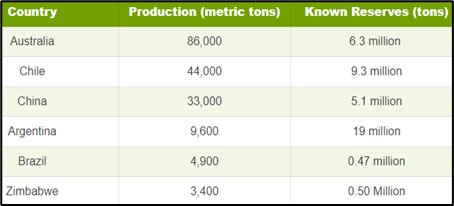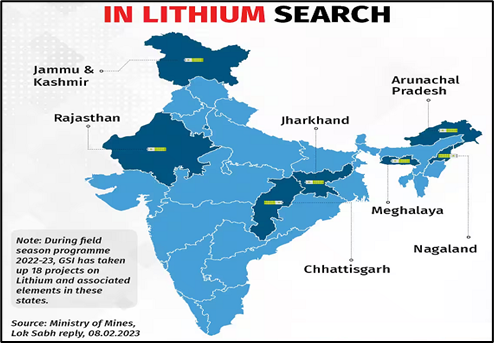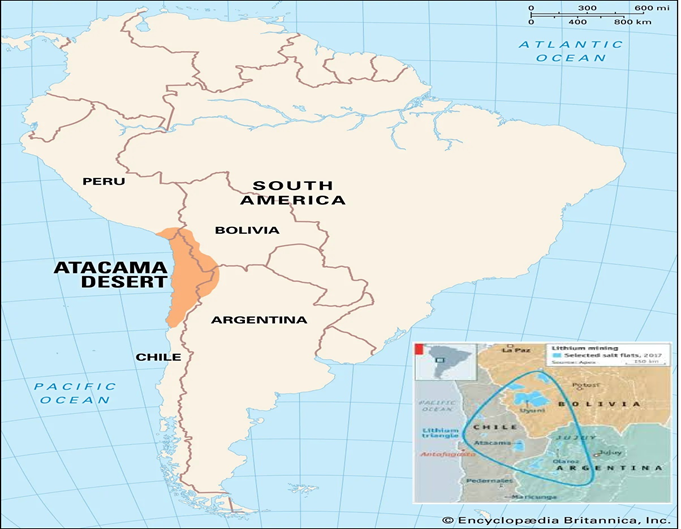Why in News?
According to a new study, Chile’s Atacama salt flat (flat expanses of ground covered with salt and other minerals) is sinking at a rate of 1 to 2 cm per year due to lithium brine extraction.
The process of extracting lithium from brine involves pumping salt-rich water to the top and through a sequence of evaporation ponds in order to recover lithium.
What’s in Today’s Article?
- What is Lithium Mining?
- Lithium Reserves and Mining in India
- Environmental Challenges Posed by Lithium Mining
- Fallouts of Lithium Mining in Chile
What is Lithium Mining?

- Lithium mining refers to the extraction of lithium primarily from brine water and hard-rock (spodumene) deposits.
- Brine extraction, which accounts for 66% of the total lithium production, involves pumping underground brine to the surface and allowing the water to evaporate, leaving behind lithium carbonate.
- Hard-rock mining involves extracting lithium-bearing minerals from rock through traditional mining techniques.
- Lithium production has dramatically increased over the past decade.
- The global output surpassed 100,000 tonnes (tonne = metric ton) for the first time in 2021, a fourfold increase from 2010.
- In 2022, global lithium mines produced an estimated 130,000 metric tons.
Lithium Reserves and Mining in India:

- The Geological Survey of India (GSI) had for the first time in India's history established Lithium inferred resources of 5.9 million tonnes in Jammu and Kashmir’s Reasi district.
- Months after India's first lithium reserves, the GSI has found another reserve of the crucial mineral in Degana in Rajasthan's Nagaur district.
- These reserves are believed to be much bigger in quantity (than found in J&K) and can meet 80% of the total country's demand.
- The Ministry of Mines successfully auctioned off India’s first lithium block in Chhattisgarh’s Korba district (Katghora region) recently.
Environmental Challenges Posed by Lithium Mining:
- Deplete water resources: Extracting one ton of lithium requires approximately 500,000 litres of water, which can deplete water resources in arid regions and impact local communities and ecosystems.
- Contaminate soil and water sources: The chemicals used in lithium extraction, such as sulfuric acid, can contaminate soil and water sources, posing risks to human health and wildlife.
- Carbon emissions:
- Lithium mining, particularly from hard rock sources, is energy-intensive, requiring substantial electricity for crushing, grinding, and chemical separation processes.
- This energy often comes from non-renewable sources, exacerbating carbon emissions and the carbon footprint of lithium production.
Fallouts of Lithium Mining in Chile:

- The research has shown that lithium mining (over the years) has had severe environmental fallouts, especially in countries such as Chile.
- The satellite data collected between 2020 and 2023 shows deformations in the Earth’s crust of Atacama salt flat - one of the largest sources of lithium in the world.
- The worst affected areas are those where mining companies are doing most of their pumping of lithium-rich brine.
- That is happening because the pumping takes place at a faster rate than the recharge of aquifers, leading to subsidence or the downward vertical movement of the Earth’s surface.









